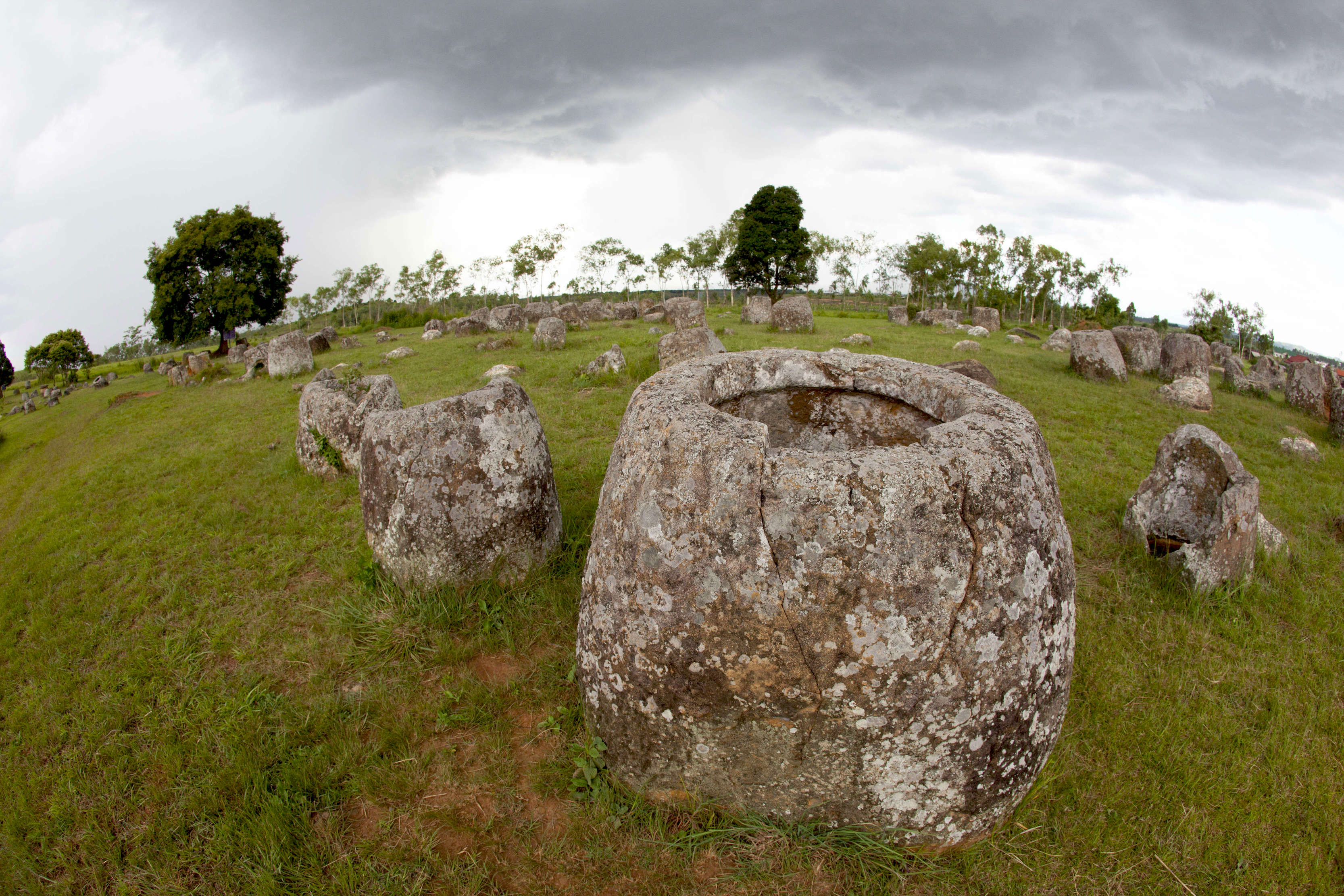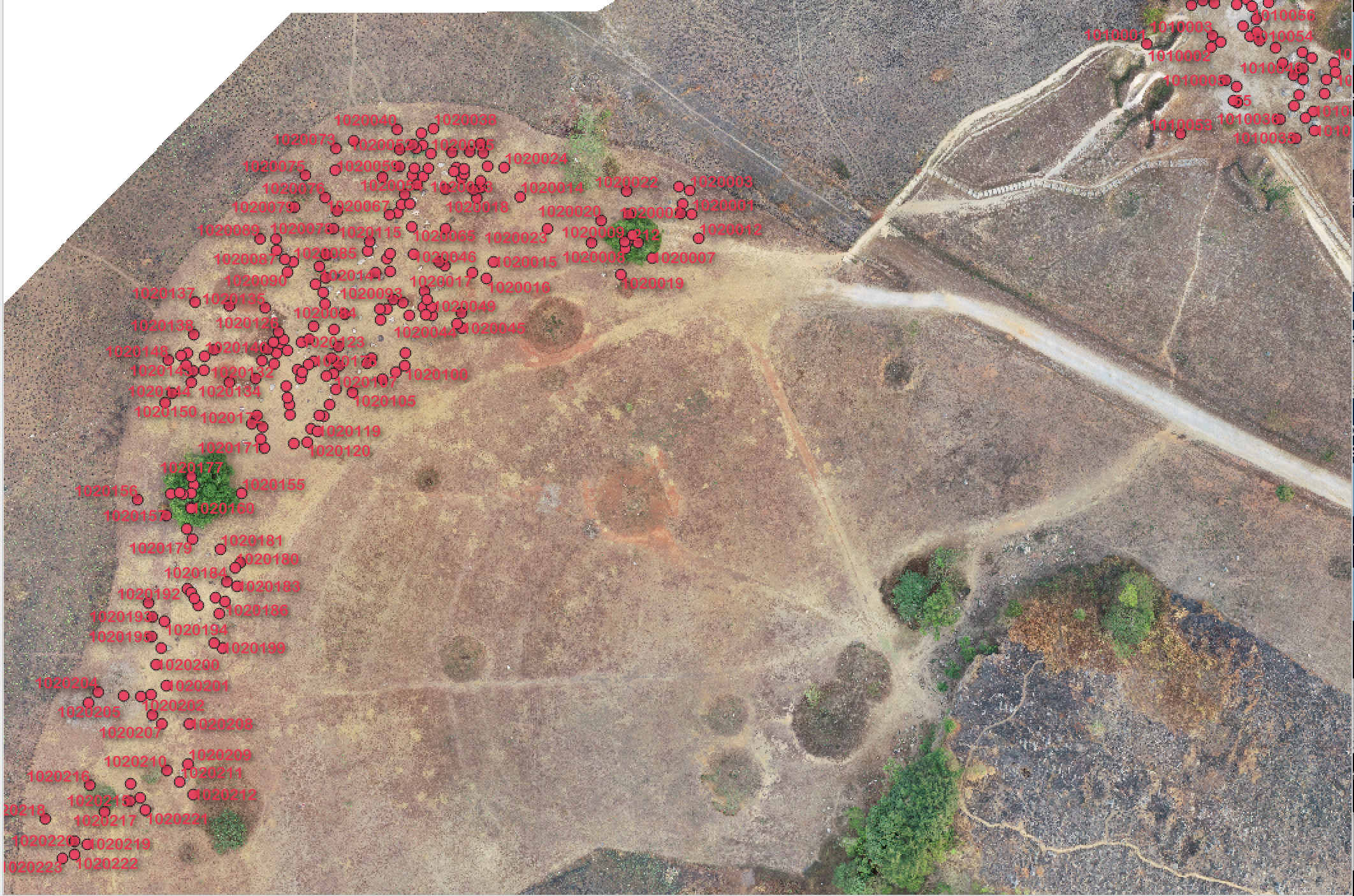
Sciences & Technology
Saving the secrets of the jars of Laos

New dating techniques find that Laos’ stone jars may be at least 3,000 years old, but the sites remained significant for rituals until just 700 years ago
Published 16 April 2021
In the rugged province of Xieng Khoaung in upper northern Laos are scattered more than 2,000 large carved stone jars. They vary in size, with the biggest standing at just over 2.5 metres tall and weighing in at 30 tonnes. The jars are believed to have been used for funerary purposes, with human remains (including teeth) found buried around some of the jars.
Our Lao-Australian archaeological research team has been working to unlock some of the secrets of the Laos jar sites since 2016.

2020 was our fourth field season and the team headed back to Laos with a mission to complete survey expeditions in some of the less-frequented regions of northern Laos, and excavate at a location at Site 1 (known as Ban Hai Hin) – the most visited of the 11 UNESCO World Heritage listed jar sites.
This is a job made more challenging given the extensive unexploded ordnance that still contaminates Xieng Khouang Province, where less than one percent of the land has been cleared.

Sciences & Technology
Saving the secrets of the jars of Laos
Our team met up again with Dr Thonglith Luangkoth, the project co-director from the Laos Department of Heritage, in Vientiane and we drove the seven hours to the Plain of Jars.
But in February 2020, news of the spread of COVID-19 added extra pressure to the schedule of work, excavations and mapping
Fortunately discoveries were made very quickly .
Our team, made up of Australian and Lao researchers and students, uncovered more human burials around the megalithic jars and confirmed that the exotic quartz rich boulders found across Site 1 were used as place markers for sub-surface ceramic burial jars.

Back in the Xieng Khouang museum, about 10 kilometres away from our excavations, our examination of the contents of some of these buried ceramic vessels showed they contained the skeletal remains of infants and children.
Although ceramic jar burials are known throughout Southeast Asia dating from around 2250 BCE, and archaeologists have found other examples in Laos in the 1980’s – this was the first time the Laos ceramic jars were shown to contain human skeletal material. This tells us that the mortuary activity at the site was much more complex than we first thought, featuring three types of ritual - primary burials (where the skeleton is laid out), secondary burials (bundles of bones) and the ceramic jar burials.

Arts & Culture
Lucky discoveries of lost ancient history
New radiocarbon dates of bone from a secondary burial located next to jars at Site 1 indicates interment occurred between 773-987 CE, mirroring dates from our earlier 2016 excavations.
Arriving back in Australia in March 2020, just days before lockdown, our team carefully carried skeletal, ceramic and sediment samples for dating and isotopic analysis, as well as precious bronze artefacts that will be conserved at the University’s Grimwade Centre for Cultural Materials Conservation.
The research results from our earlier 2019 excavations at nearby Site 2, about 12 km from Site 1, suggest the jars were placed there potentially as early as the late second millennium BCE.

We used Optically Stimulated Luminescence (OSL) to date the sediments beneath the jars, which gives us an estimate of when sediment was last exposed to light.
Until now, we could only guess at when the sites may have been created and the jars positioned by studying the artefacts found around the jars.
Our aim is to now use this method at some of the other sites, where the stone source isn’t found in the immediate vicinity of the site.

Arts & Culture
Out of ancient marshes
Extensive UAV (Unmanned Aerial Vehicle or drone) mapping of Site 1 was also completed in 2020.
This has created of a high-resolution 3D map of the area, recording the precise position of each of the 316 individually numbered jars.
Dr Luangkhoth and his team of heritage researchers can now cross-check the condition of the sites and jars against an extensive repository of photographs, 3D models, and morphological data curated by the team over the past few years.
Together with the Lao archaeology students, local heritage staff and volunteers working on the project, Dr Luangkhoth brings local insight to the understanding of the sites and the significant role they play in the life and culture of the Lao people.

An exciting new development has been the successful collaboration with innovative data specialists from the Melbourne Data Analytics Platform (MDAP) who have created a data repository and website.
This resource provides our Lao colleagues, UNESCO staff, heritage personnel, other researchers and students, access to scientific data, historical material along with reports and analyses to assist the ongoing conservation efforts of the World Heritage site.
While we can’t be at the sites, the data on the platform can be updated as more discoveries are made, allowing research to continue during this period of restricted international travel.

Our team is hoping to return to Laos when international travel resumes after the pandemic. In the meantime, we have plenty of analyses to complete including the isotopic analysis from the recent excavations, dating of ceramic sherds and the conservation of bronze artefacts which will be returned to Laos for display in the Xieng Khouang museum.
When we combine these results with the radiocarbon dates from the burials at Site 1, estimated to be between the 8th and 13th centuries CE, this indicates that the sites have maintained cultural significance for a considerable amount of time.
Our research also details geochronological studies of jar and quarry samples used to determine the likely source of stone for the jars at Site 1.

Using U-Pb zircon dating, a method used by geologists to identify source rocks and their ages, zircon grains from a jar at Site 1 were compared to a sandstone outcrop and an unfinished jar from a presumed quarry around eight kilometres away from Site 1.
All three samples revealed identical age groupings suggesting they have a very similar provenance and that the outcrop (at Phou Kheng or Site 21) was the likely source of the material used for the jar at Site 1.
Banner: Getty Images